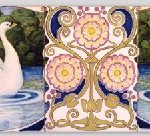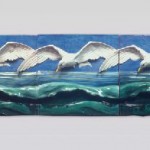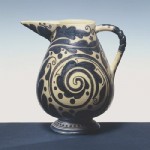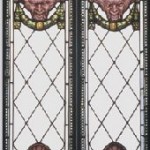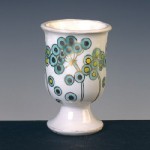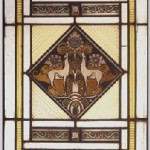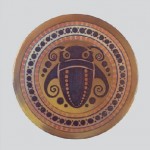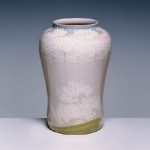The Manifattura Chini Museum situated in the gorgeous rooms of Villa Pecori Giraldi in Borgo San Lorenzo (FI), was inaugurated in 1999, it is part of the territory’s Museum Network called Museo diffuso.
The museum documents the different stages of Chini’s ceramics and glass production, as represented by an interesting and lavish collection of majolica, stoneware, glass and preparatory sketches. The collection documents the productions of two manufacturers: L’Arte della Ceramica (The art of ceramics, approx. 1896-1904) in the Florentine and Fontebuoni workshops, and the Fornaci San Lorenzo (approx. 1906-1944) in Mugello. In both these periods the success of the factories is mostly due to Galileo Chini (1873-1956) and to Chino Chini (1870-1957), respectively artistic director and technical director.
The tour begins on the ground floor of Villa Pecori Giraldi where we can still observe numerous traces of the versatile Chini production, with decorative interventions made by the various members of the family, to start with Pietro Alessio Chini (1800-1876)
The Coats of arms room, grand entrance hall of the ancient building, holds numerous works attributed to Galileo Chini, commissioned by Guglielmo Pecori Giraldi between 1906 and 1911. Among these, and of particular artistic interest, we find a fresco of San Giorgio che uccide il drago (St. George killing the dragon). Above the lintel of the little door on the left, we find a majolica lunette depicting “Christ with a crown of thorns”, created by Galileo Chini and produced by L’Arte della Ceramica.
Off the entrance hall we find a large room which holds an enormous ceramic fireplace created by the Fornaci San Lorenzo. In the next room there is a vast selection of the various architectural materials used and produced from the beginning of the 20th century by, first, the manufacturing company, Arte della Ceramica and, later, Fornaci San Lorenzo and the recreation of a mitten furnace with the description of its operation mode.
From the vestibule, climbing up the elegant winding staircase attributed to Galileo Chini, we arrive at the first floor. A rich collection of objects, small vases in grès and majolica, stained-glass panels are on display in these rooms. The interior design of the ‘living room’ was created in early 20th century style with furniture in Art Déco style, to display the paintings of the Museum.


